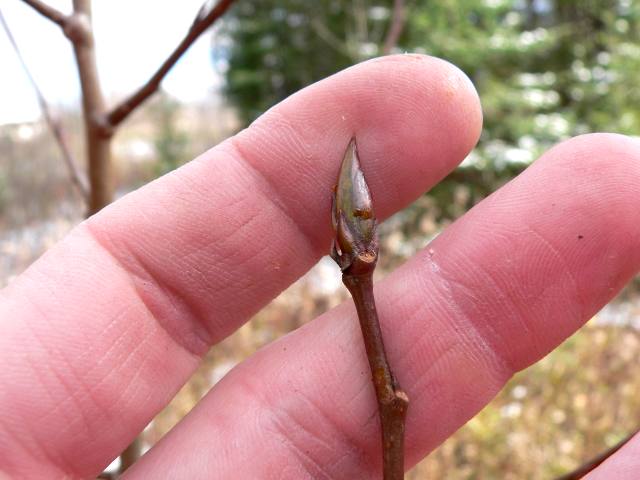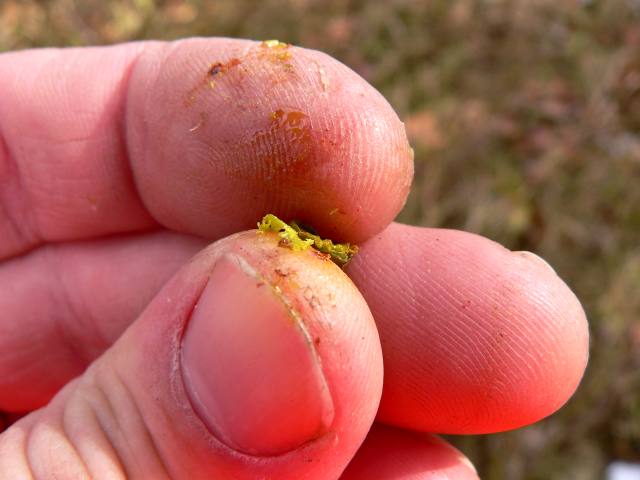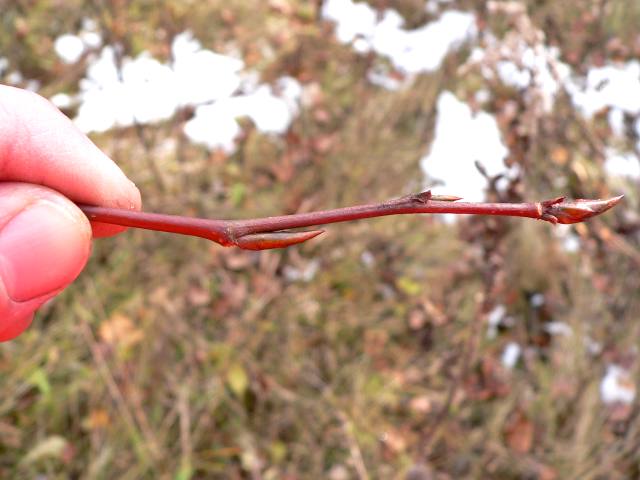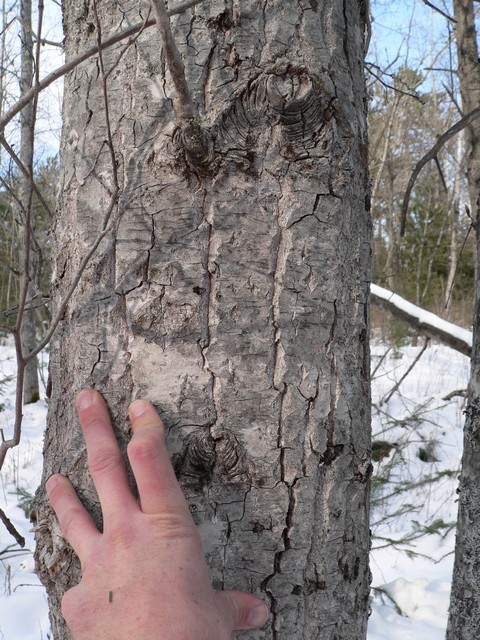Balsam Poplar Populus balsimafera
Family: Salicaceae (Willow)
Branching: Alternate
Other names: Black Poplar
Balsam Poplar can look very similar to Eastern Cottonwood and
apparently hybridizes with it often. It is usually smaller a
smaller tree, and more typically found farther north. The
buds are usually larger than
the Trembling or Large-toothed Aspen, but share a similar colouration
with Trembling Aspen (though Trembling Aspen buds have more scales).
In size, they are similar to Eastern Cottonwood but are
reddish-brown, rather than yellowish-brown and are much more resinous.
The resin, as well as a strong spicy aroma is evident if the buds
are crushed. If you get
a leaf, a good distinction is that Balsam Poplar leaf stalks are round,
whereas Eastern Cottonwood (and the Aspens) are flattened and do not
roll easily between the fingers. Also the Balsam Poplar leaves
themselves are much more elliptical and elongated than the other
members of the group (though intermediates are possible with hybrids
with Eastern Cottonwood)

End bud of Balsam Poplar.

The inside of the bud when crushed. Fragrant and very sticky!

Lateral bud. Notice how the lowest bud scale is directly above the leaf scar. This is the case with all Poplars.

Balsam Poplar

Balsam Poplar end bud next to a Trembling Aspen. Colour is similar but Balsam Poplar
is larger and with fewer bud scales

Leaves can be helpful as Balsam Poplar have the most elongated leaves of the Poplars
and this rounded leaf stalks

Like other members of the group, Balsam Poplars are sun-loving trees that quickly sprout
up after a disturbance, but are eventually overshadowed by slower-growing trees

Young bark (not always this dark, though.

Balsam Poplar bark as it begins to split. It is more grey
than the Aspens but can be similar to Eastern Cottonwood
Back to the
main page
copyright
© 2007 Josh Sayers
please email me with any questions, comments, or errors